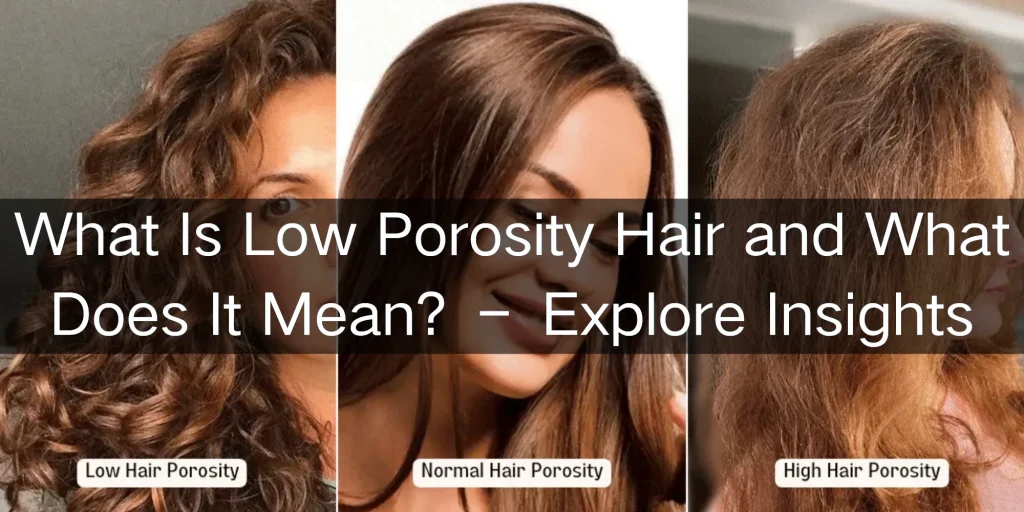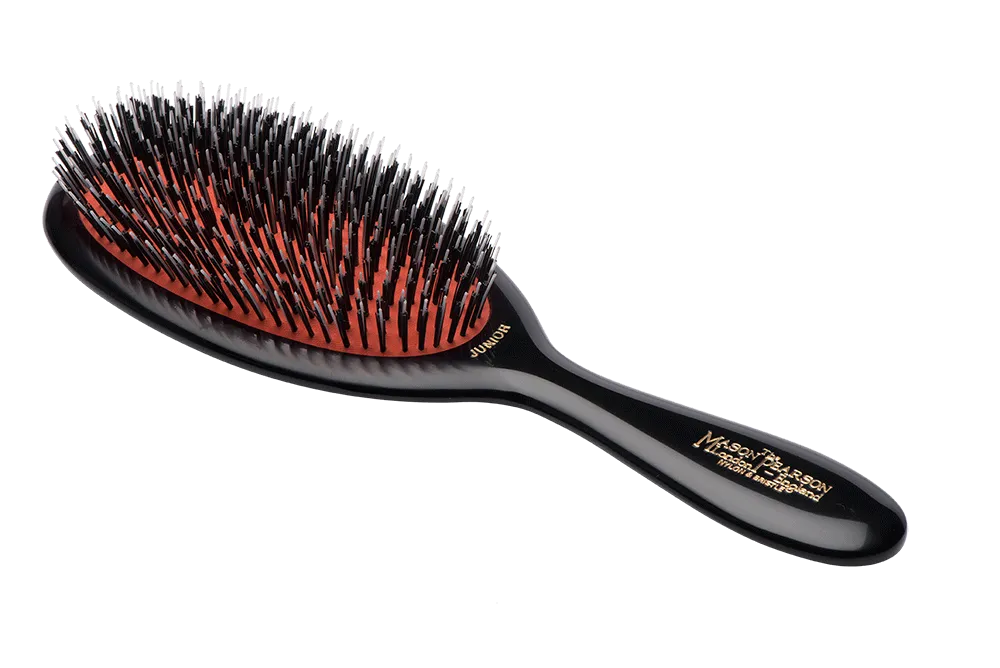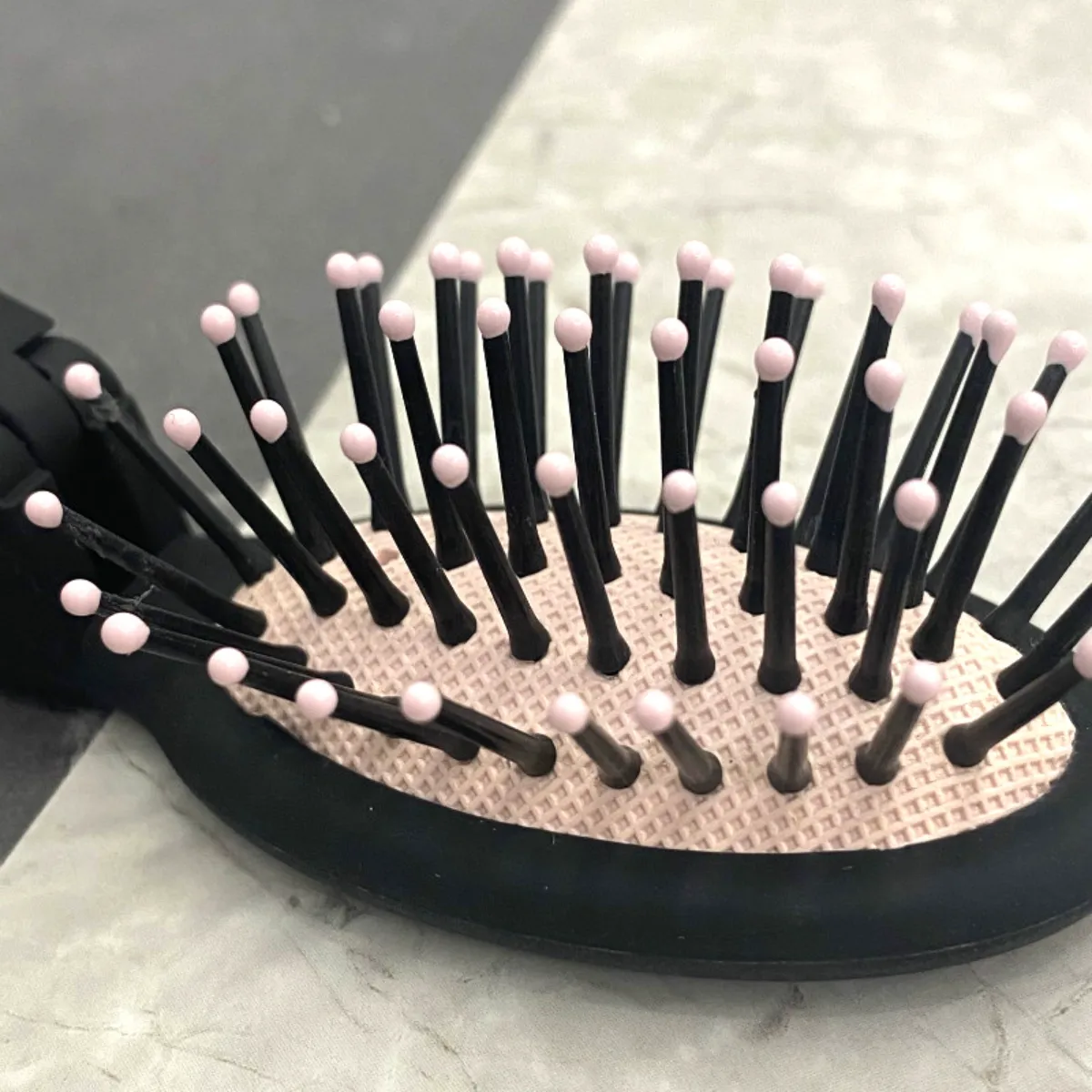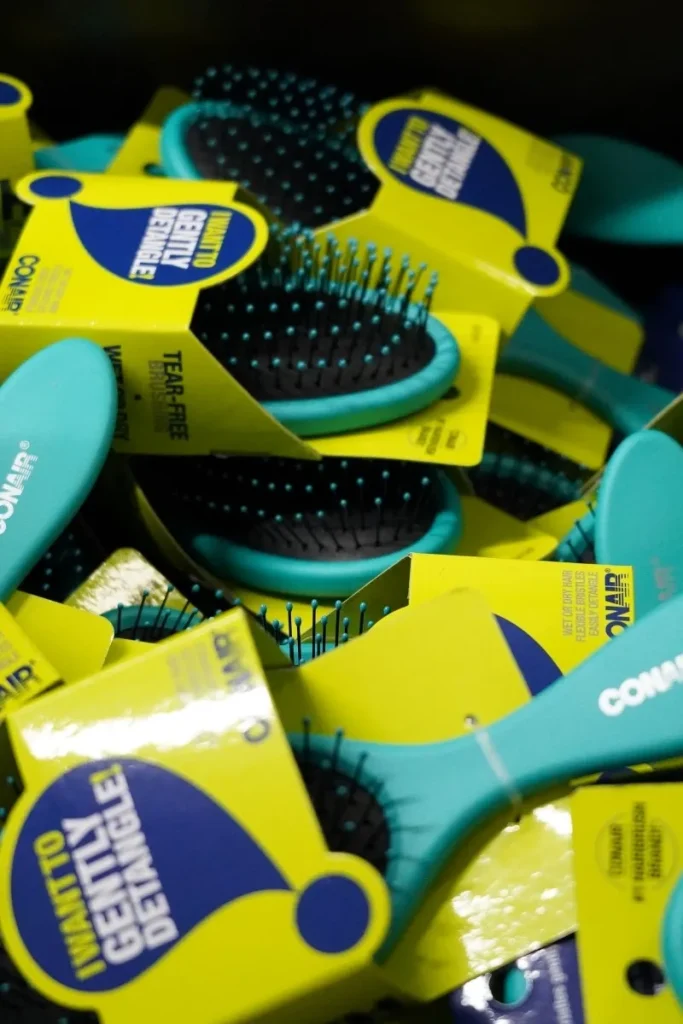Hair porosity decides how well your hair can receive and retain moisture, which is an important aspect of hair-product selection. In case you have ever had problems with dry hair and it was not hydrating well, you may have low porosity. Being aware of “what is low porosity hair” will prevent the buildup and the use of products that are ineffective. In this guide, you will discover how to determine low-porosity hair, its causes, testing, and the proper ways to take care of it using the right practices according to the needs of the hair.
What Is Hair Porosity?
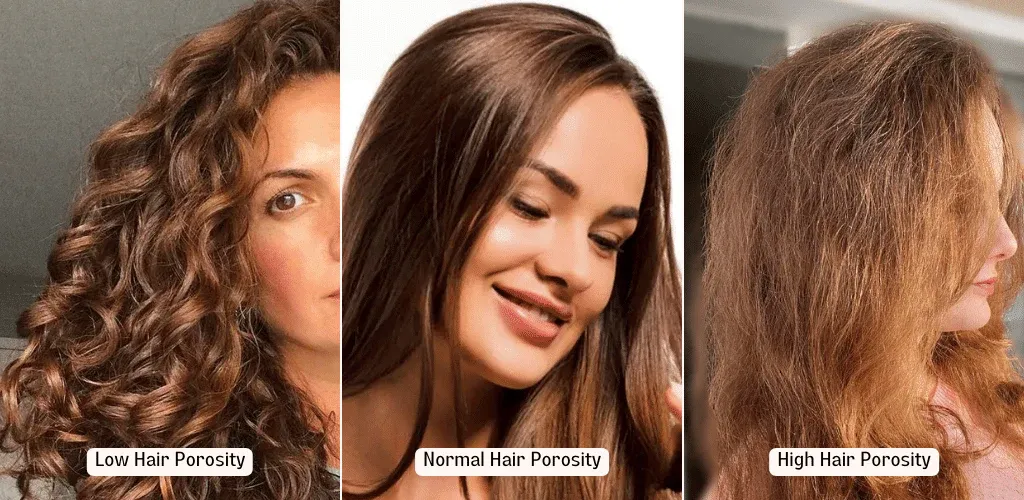
Hair porosity is the capacity of your hair to absorb and maintain moisture. It depends on your cuticle state, which is the external part of your hair. Each strand has three layers, the cuticle, cortex and medulla. This happens when your cuticle is flat, and tightly bound resulting in low porosity which allows moisture to penetrate with difficulty. When it is elevated or broken, water flows in and out without difficulty.
Types of Hair Porosity
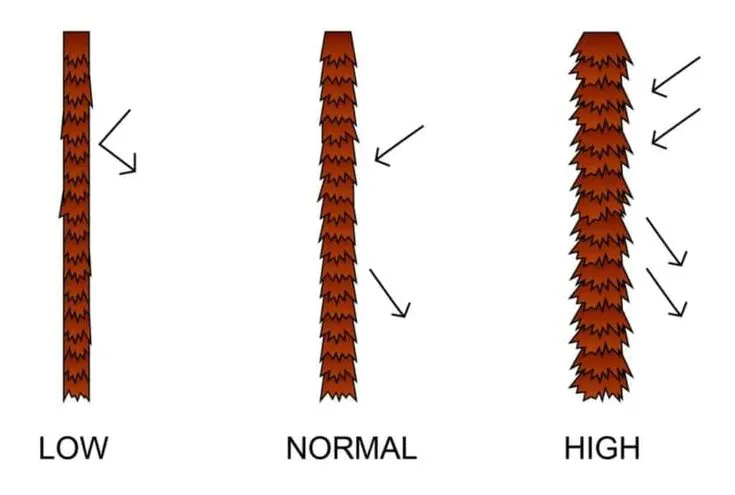
Low Porosity Hair
When the porosity of your hair is very low, your cuticles are compact and flat. This does not allow moisture or products to enter the hair shaft. What you might find is that your hair takes a considerably longer amount of time to become thoroughly wet and even longer to dry. Moisture is also held well after absorption but there is product buildup. You may also discover that protein rich conditioning leaves your hair stiff or dull.
Medium Porosity Hair
Your cuticles are raised slightly and aligned properly with medium porosity. Your hair will be able to absorb more moisture and products and hold a style. This type does not require much modification to remain healthy and hydrated.
Hair with a high porosity
When your hair is highly porous, it probably dries out very fast after shampooing. The cuticle layer is elevated or breaks and moisture is able to enter easily. You may experience frizz, tangles, or breakage, particularly when you have curly hair, coily hair, color-treated hair, or heat-damaged hair. Protein treatment and gentle care will be required to ensure moisture is locked in and the damage kept to a minimum.
Medium Vs High Vs Low Porosity Hair
| Feature | Low Porosity Hair | Medium Porosity Hair | High Porosity Hair |
|---|---|---|---|
| Cuticle Layer | Tightly packed, flat | Slightly raised, well-aligned | Raised, open, or damaged |
| Moisture Absorption | Difficult for moisture/products to penetrate; takes longer to get wet | Absorbs moisture/products easily | Absorbs moisture easily, but also loses it quickly |
| Drying Time | Longer to dry | Moderate drying time | Dries quickly |
| Moisture Retention | Strong once absorbed | Good, holds styles well | Poor, moisture escapes easily |
| Product Buildup | Common | Less common | Less common (products absorbed, but don't stay) |
| Protein Treatments | Can make hair stiff or dull; use sparingly | Responds well to protein treatments | Needs protein to fill gaps in cuticles; use regularly |
| Base Type | Smooth, shiny; can feel stiff/heavy with wrong products | Balanced, healthy-looking, good elasticity | Can appear frizzy, dull, rough; prone to tangles and breakage |
| Common Concerns | Product buildup, difficulty absorbing moisture | Minimal concerns; generally easy to manage | Dryness, frizz, breakage, tangles, damage |
| Hair Care Focus | Clarifying, gentle heat for product penetration, lightweight products | Balanced routine, maintaining health | Sealing in moisture, minimizing damage, protein-rich products |
What Is Low Porosity Hair?

When hair has low porosity, the cuticles on your hair are flat, tightly closed and overlap as roof shingles. This structure does not allow moisture, oils, and conditioners to easily get into your hair shaft. In the event that you possess low porosity hair you will observe that water will rest on top of your hair instead of absorbing in. Your hair may be soft yet may have problems with buildup as products tend to be applied on the surface. Lightweight, heat activated products are required to assist in opening the cuticle and increase absorption.
Common Signs Of Low Porosity Hair
- Hardness in wetting the hair:You will find that water beads on your hair rather than absorb in it even when you are taking a shower. This is due to the fact that your cuticles are well sealed and it is hard to penetrate water.
- Products seem ineffective:The conditioners or the moisturizers may just lie on your strands without soaking up and it feels like nothing is working. You can even notice a buildup of product or a film on your hair following application.
- Constant dryness even after moisturizing:You moisturize regularly, but your hair is always dry or hard, particularly at the ends. This is because the moisture finds it hard to penetrate into the hair shaft and leaves the hair shaft starved.
- Protein-sensitive reactions:You can experience a protein sensitivity after using protein rich products, where your hair feels stiff or brittle. In low porosity hair, there tends to be sufficient protein, and thus addition of the same leads to imbalance.
- Frizzling when wet:Your hair becomes frizzy and lacks shine even when there is high humidity in the air, unlike the other types of porosity, which can absorb moisture in the air. Your hair becomes resistant to moisture and swells in uneven directions rather than getting hydrated.
- Natural oils remain on the hair:Your scalp produces oil but it does not flow along your strands, but rather remains on the surface that creates a greasy feel. This causes your hair to appear weighted yet to the touch it remains dry.
How to Conduct Low Porosity Hair Test?
1. The Float Test
It is one of the most known and easy porosity tests.
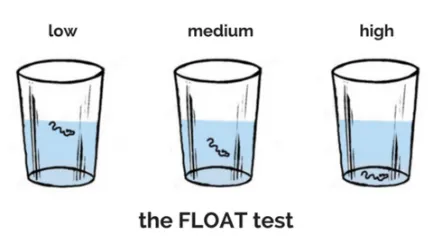
How to do it:
- Take some shed strands out of your brush or comb.
- Take a clear glass and fill it with water at room temperature.
- Place the strands of hair into the water.
- Leave them to rest 3-5 minutes.
What it tells you:
- When the strands rise to the top, you probably have low porosity hair. The dense cuticles are moisture repellent.
- In case the strands submerge rapidly, your hair is most probably high porosity. Lifted or broken cuticles enable water to enter quickly.
- When the hair floats at some point in the middle, they are likely to be medium porosity, i.e. you are balanced in terms of your hair.
Tip: Never apply oils, conditioner, or leave in to the hair. The strands may sink too soon due to product residue and cause a false reading.
2. The Strand Test
This test will enable you to know the sensation of your cuticles.
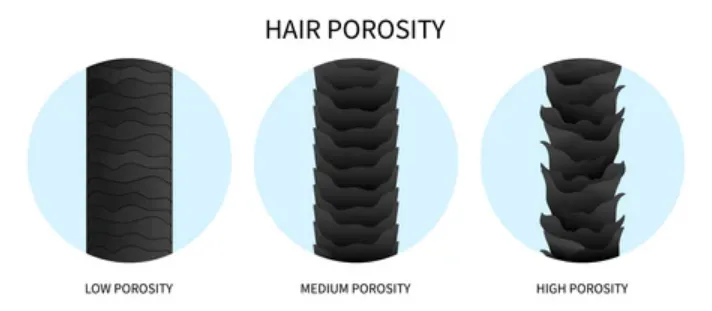
How to do it:
- Select one, dry, clean hair.
- Take it at one end and rub your fingers briskly round the end towards the root.
How to do it:
- Select one, dry, clean hair.
- Take it at one end and rub your fingers briskly round the end towards the root.
Tip: Experiment with it on several strands in various regions of your head. The porosity of hair may be different in different sections, particularly under different hair care regimes or when exposed to heat.
3. The Spray Bottle Test
This is a test that replicates the reaction of your hair to contact with moisture.
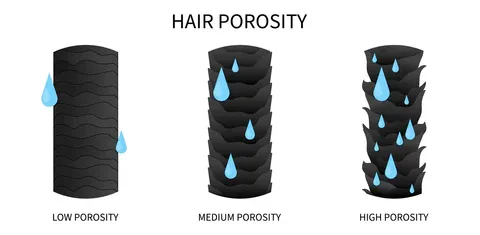
How to do it:
- Divide a small section of your clean and dry hair.
- Spray with a little water.
What it tells you:
- In case the water forms beads and merely rests on your hair, then it probably has low porosity. The smooth layers of cuticle do not absorb water.
- When the water is absorbed rapidly this is an indication that it is highly porous – your hair is thirsty and eager to absorb the moisture.
- When the water takes one or two minutes to soak in, then you could have medium porosity hair.
Tip: Do not overspray. The most accurate result would be a light mist that does not over saturate your strands.
How to Conduct Low Porosity Hair Test?
Genetics
You may just have rather congested cuticles. In case you are of African or Asian origin, there are higher chances that your hair has low porosity because of its structure. It is a genetic characteristic which cannot be changed easily, therefore the most important thing to do is adjust your routine.
Environmental Factors
When you are in cold weather, this can seal your cuticles and absorption of moisture is hard. Product penetration is also blocked by hard water or mineral build up. This will eventually result in dryness and dullness no matter how much you moisturize.
Product Overuse
Applying heavy silicones, waxes or oils may form a barrier that keeps the moisture out. When protein-rich products are overused, they can make the hair dry, and lose balance. In case your hair feels covered or unresponsive, your products can be working against you.
Heat Styling and Chemical Treatments
Over time, your cuticles can be hardened due to excessive use of a blow-dryer or flat irons without protection. Even low chemical services such as keratin smoothing can temporarily decrease porosity. Your hair will become harder to condition deep or absorb water.
Misbalancing of pH in Products
Rinsing your hair with very harsh surfactants or highly alkaline shampoos can seal your cuticles down. When the pH is unbalanced, your hair ceases to be able to absorb moisture in the right way. Overly alkaline or acidic products may also cause irritation and permanent damage to the scalp.
Common Myths About Low Porosity Hair
“Low Porosity Hair Is Unhealthy”
You may be told that low porosity hair is broken and that is not true. It is merely a natural attribute of hair where your cuticles are flat and very compact. It does not imply that your hair is unhealthy; it simply acts in another way. You should know it, not mend it.
“Protein Treatments Are Always Bad”
Low porosity hair does not need all the protein to be bad. All you have to do is be discriminating. Use less proteins such as hydrolyzed silk or wheat and do not use too frequently. When your hair is stiff or dry, perhaps you need to relax. However, some protein is beneficial in terms of strength and elasticity.
“You Don’t Need to Moisturize Low Porosity Hair”
Low porosity hair does still require moisture- you simply have to provide it in the correct manner. Water-based products are lightweight and have better absorbency. Heat or steaming can open up the cuticle to allow moisture to actually enter. Do not miss hydration.
“Low Porosity Hair Doesn’t Need Heat”
You might avoid heat, supposing it does damage. However, gentle heat is beneficial to low porosity hair. It raises the cuticle up to a small extent, and this helps treatments to enter. Heat cap or a warm towel can go a long way in your routine..
Scalp Care for Low Porosity Hair
Want to learn more about professional care for low porosity hair? Visit now: How To Care For Low Porosity Hair
How To Care For Low Porosity Hair? – The Complete Beginner’s Guide
Blocked Follicles Inhibit Growth and Moisture
When you have low porosity hair, the health of the scalp is central to the general health. The buildup of products, dead skin, or too much oil in the follicles prevents the growth of hair and moisture as well. This makes your scalp even more difficult to keep balanced and keeps your strands hydrated.
Select Light Oils Carefully
The heavy oils tend to remain on top of your scalp rather than penetrate. Rather, apply lighter oils such as jojoba, argan or grapeseed. These imitate your own sebum and will not lead to congestion in case you use them sparingly.
Tenderly Shampoo Your Head
The diluted apple cider vinegar (ACV) rinse or a mild clay mask, such as bentonite, can be used to clean your scalp without stripping it. These natural clarifiers assist in cleaning up and re-balancing the pH without harming your skin.
Include Scalp Massages in Your Life
Frequent massage of the scalp enhances blood circulation aiding in the maintenance of healthy follicles and transport of nutrients. Apply twice or thrice a week with finger tips or massage device. Add a few drops of oil to provide an extra nutritious and relaxing effect.
Signs You’re Using the Wrong Products
Persistent Dryness
When your hair is dry regardless of the frequency of moisturizing it, then it is not absorbing. Low porosity hair requires light water based products that can pass through the closely spaced cuticles.
Oily But Crackly Finishes
You can even use oils to make them shiny but still end up experiencing breakage at the ends. This is because heavy products just lie on your strands instead of being absorbed causing them to be greasy yet weak.
Scalp Flaking or Congestion
In case of a clogged or itchy scalp, your follicles may be blocked by buildup of inappropriate products. Clarifying is useful, but the lasting cure is to use less offensive, less heavy products.
White Residue or Film
Inability to absorb into the hair means that the product is obvious on your hair. You require the formulations that suit your hair porosity.
Muddy Look despite Moisturizing
When hydrated, low porosity hair is supposed to be shiny. In case it remains dull, your products probably do not extend to the inner hair shaft.
Clarifying: Why, When, and How Often?
It is necessary to clarify to get rid of the buildup caused by products, hard water, or natural oils, particularly when your hair is low porosity. You need to clarify when your locks become heavy, lifeless, or products fail to work. Apply a mild clarifying shampoo. A homemade rinse with apple cider vinegar or baking soda is also an option, but these should be applied sparingly to prevent dryness. Clarify after every 2-4 weeks: if you use heavy products or style regularly. When you clarify regularly according to your hair and its needs, you will see improved moisture absorption, and a better hair texture.
Ingredient Watchlist – What to Avoid in Low Porosity Hair
Non-Water-Soluble Silicones
These silicones cover your hair, locking in moisture and making it clog. You will feel like products simply lie on your strands. Never ignore ingredients such as dimethicone or amodimethicone.
Mineral Oil and Petrolatum
These contents form a dense shield. In low porosity hair, that barrier locks out moisture instead of locking in moisture. You are better off using lighter plant-based oils.
Heavy Butters (Especially in Cool Climates)
Shea and cocoa butter can be luxurious but will smother your hair during the winter months. Apply them sparingly and target your ends when you use them.
Overload of Proteins
Protein-sensitive hair is the low porosity hair. Keratin, collagen, or silk protein overloading can cause stiff brittle strands. Consume protein-based products when required.
Sulfates and Aggressive Surfactants
These deprive you of your own oils and make the cuticle even tighter. To maintain your moisture barrier, you can use mild, sulfate-free cleansers.
Conclusion
Knowledge of what is low porosity hair equips you with the ability to take care of your strands. Low porosity does not absorb moisture like high porosity hair and therefore product selection and application is critical. You must identify the indicators of low porosity hair, carry out a low porosity hair test, and develop a personal regimen. The differences between low vs high porosity hair care are not universal the same solution is not good for all cases. Increase absorption by using low heat, light products, and the best oils to nourish low porosity hair.
FAQs
How often should you wash low porosity hair?
Shampoo your hair once a week or once in 10 days. This helps avoid buildup and does not remove natural oils. Apply a clarifying shampoo once every month when you apply heavy products.
How do you know if you have protein overload?
When your hair is stiff, dry, and breaks easily, then you possibly have an overload of protein. You will find that it is not elastic and it does not react well to moisturizing creams.
Is low porosity hair bad?
No, it is not bad. Low porosity hair is simply an attribute. All you have to do is assign your regime to allow moisture to enter your compacted cuticles.
What are the best oils for low porosity hair?
Lightweight oils, such as argan, grapeseed, sweet almond, or baobab oil, are the way to go. These are easily absorbable and will not sit on your hair or be build up. Apply them lightly into wet hair.

